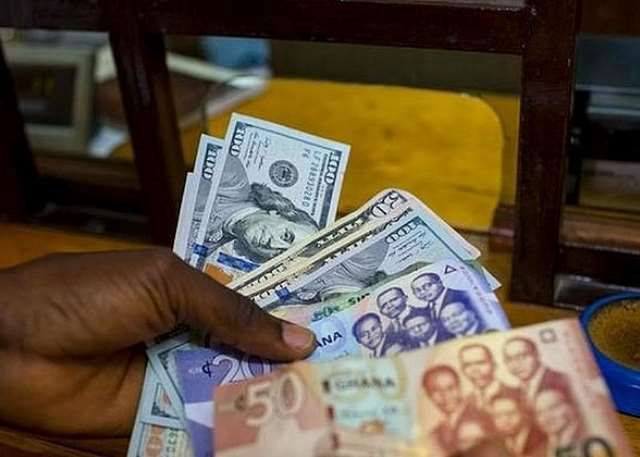The Ghanaian cedi’s performance against the US dollar on August 4, 2025, showcased a dynamic interplay of forces within the foreign exchange market. Data aggregated from Cedirates.com, a trusted source for currency and fuel pricing in Ghana, revealed a nuanced landscape where the cedi’s value varied across different exchange platforms. At forex bureaus, the cedi traded at an average buying rate of GHS10.53 and a selling rate of GHS11.03, reflecting the rates at which bureaus were willing to purchase and sell dollars, respectively. This contrasts with the slightly stronger performance of the cedi on the Bank of Ghana interbank market, where it traded at GHS10.50 for buying and GHS10.52 for selling. This difference highlights the influence of market segmentation and varying access to foreign currency reserves. Furthermore, the forex bureau rates revealed a wider spread between buying and selling prices (GHS11.60 and GHS11.95 respectively), suggesting higher profit margins for these businesses and potentially reflecting greater volatility and risk in the retail foreign exchange market.
The cedi’s performance against other major currencies, namely the British pound and the euro, painted a similar picture of market differentiation. Against the pound, forex bureaus offered average rates of GHS13.71 for buying and GHS14.63 for selling. The Bank of Ghana’s interbank rate for the pound stood at GHS13.97, again demonstrating the tighter spread characteristic of this more regulated market. The euro followed a similar pattern, with bureau rates of GHS12.03 for buying and GHS12.73 for selling, while the interbank rate was recorded at GHS12.16. These variations underscore the importance of considering the specific exchange platform when assessing the cedi’s overall performance. The wider spreads in the forex bureau market likely reflect the higher operational costs and potentially greater risk associated with serving individual customers, as opposed to the larger transactions typical of the interbank market.
Money transfer operators, specifically LemFi and Afriex, offered competitive exchange rates for remittances from the US or UK to Ghana. Both companies quoted GHS10.45 for dollar remittances, slightly stronger than the average forex bureau rate, suggesting a focused strategy to attract customers in this specific market segment. For pound remittances, both LemFi and Afriex offered a rate of GHS13.89, again presenting a competitive alternative to traditional forex bureaus. Similarly, both operators quoted GHS12.09 for euro remittances. This convergence in pricing between the two remittance providers suggests a highly competitive market where attracting customer volume through favorable exchange rates plays a significant role. The presence of these digital remittance platforms introduces an additional layer of complexity to the foreign exchange landscape, offering consumers more choices and influencing the overall dynamics of currency exchange.
The rates for digital subscription payments using Visa and Mastercard added yet another dimension to the cedi’s performance. Payments for services like Netflix, Spotify, and Apple Music were processed at GHS11.29 for Visa and GHS11.39 for Mastercard. These rates, slightly higher than the interbank rates but lower than the forex bureau selling rates, likely reflect the fees and charges embedded within international card transactions. The difference between Visa and Mastercard rates, though marginal, highlights the varying cost structures and agreements between these payment networks and Ghanaian financial institutions. This further underscores the multifaceted nature of the foreign exchange market, where even seemingly similar transactions can be subject to different exchange rates depending on the payment method utilized.
In summary, the Ghanaian cedi’s performance on August 4, 2025, exhibited significant variability across different exchange platforms. Forex bureaus offered generally less favorable rates compared to the interbank market, reflecting the higher operational costs and potentially greater risk associated with retail foreign exchange transactions. Money transfer operators like LemFi and Afriex presented competitive rates for remittances, likely driven by a strategy to capture market share in this rapidly growing sector. Lastly, the rates for digital subscription payments through Visa and Mastercard highlighted the additional layer of complexity introduced by international payment networks and their associated fees. Understanding these nuances within the foreign exchange market is crucial for individuals and businesses engaged in international transactions, allowing them to make informed decisions and optimize their currency exchange strategies.
This detailed analysis of the Ghanaian cedi’s performance showcases the interconnectedness of various factors influencing exchange rates, including market segmentation, competition, and the specific mechanisms of international transactions. The variations observed across forex bureaus, the interbank market, remittance providers, and digital payment platforms underscore the importance of considering the specific context when interpreting currency fluctuations. This granular understanding of the foreign exchange landscape is essential for individuals, businesses, and policymakers alike, enabling them to navigate the complexities of international finance and make sound decisions in a dynamic and evolving market. Furthermore, continuous monitoring of these trends can provide valuable insights into the overall health of the Ghanaian economy and its integration into the global financial system.














